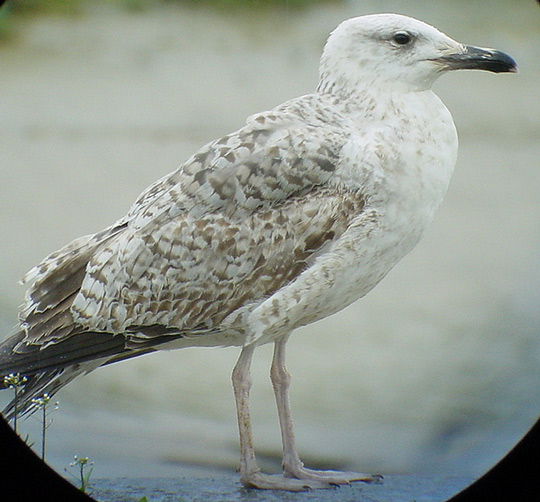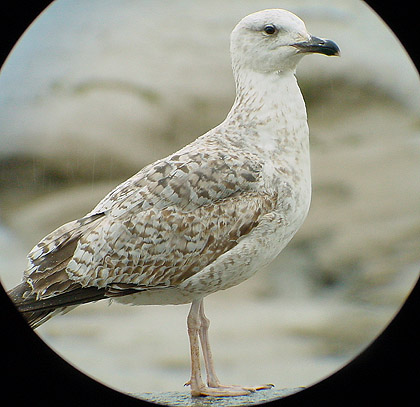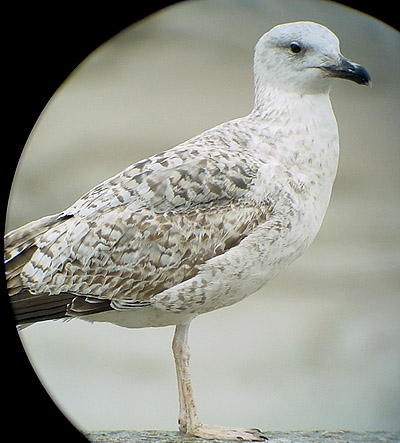 Yellow-legged
Gull - Larus michahellis
Yellow-legged
Gull - Larus michahellis
(last update: October 08 2013)
Coordinators:
Delfín González
Gabriel Martín
Antonio Gutierrez
Amir Ben Dov
Mars Muusse
Yellow-legged Gull michahellis 2CY, May 04 2001, Etaples, NW France (50.42N,1.34E).
Active moult in the scapulars is in
progress in this 2CY michahellis with about 12 third generation
barred scapulars. Some third generation feathers recall second generation
scapulars in their pattern, so note that third generation scapulars are
not necessarily adult-like grey, with a pronounced shaft-streak.
Probably this is a male with its Classic huge michahellis-look
(reminiscent of Scandinavian argentatus Herring Gulls). Compare the
three upper pictures below and see how the stance influences the general
jizz of the bird! In the first picture, it almost resembles a cachinnans,
while in the next, it clearly has the profile of michahellis.
Half of the wing-coverts (outer half) is still juvenile and abraded. The
inner 3 greater and some central lesser coverts (about 20%) have been
replaced by second generation coverts. The median coverts were moulted
randomly: 1-3 are fresh second generation, then 2 coverts are missing,
#6-7 are second generation, #8 is still juvenile, #9-11 have been shed but
the growing tips are just visibly.
Tertial #2-3 are second generation as well, but older, while the upper
tertial is still growing and tertial #4-6 are still juvenile. Those
scapulars moulted most recent, still have a brownish centre.



